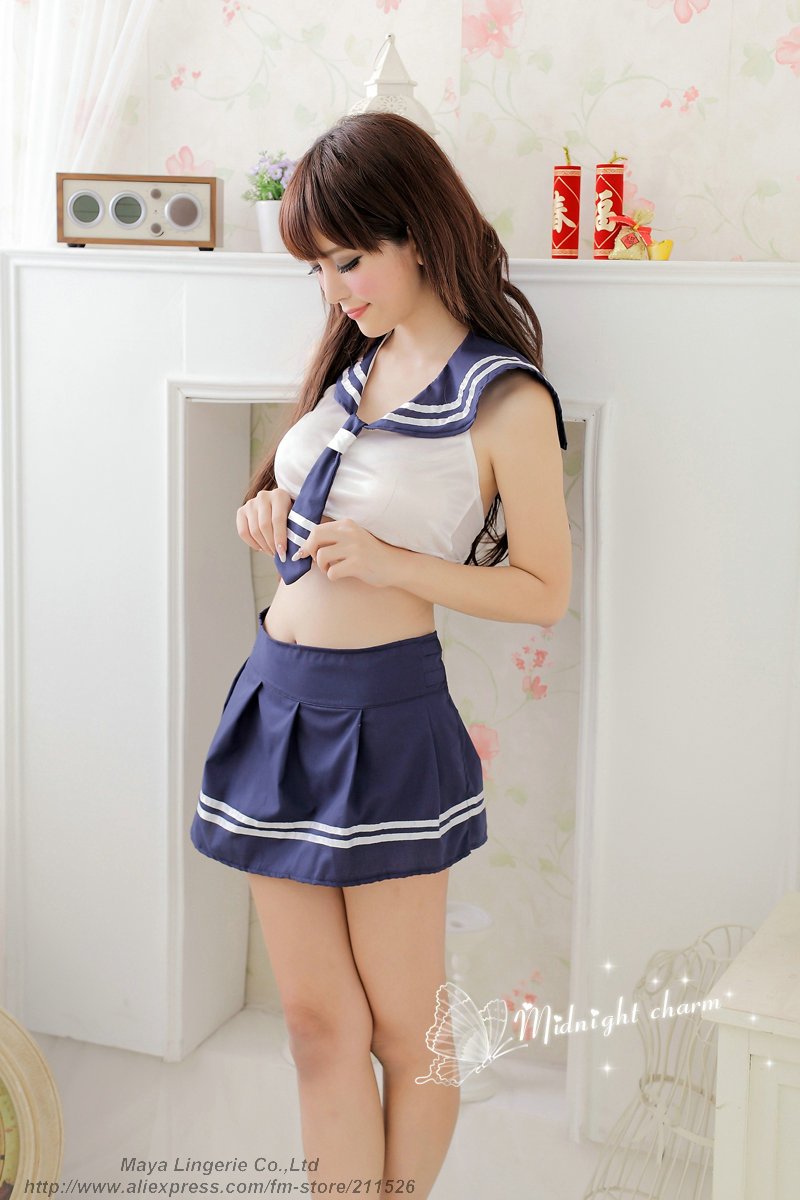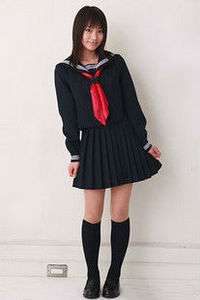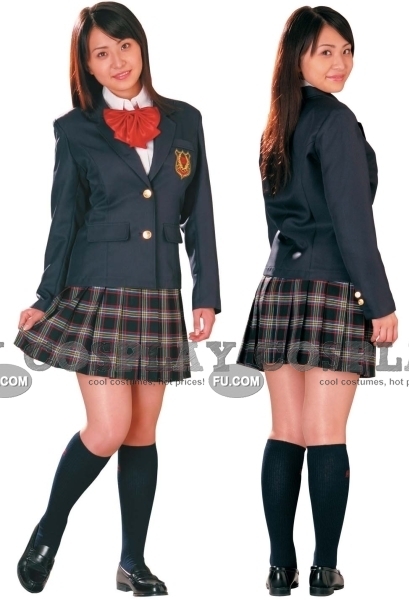Japanese School Girl Uniform Biography
Source(google.com.pk)
For years private girls academy Fukuoka Jogakuin in Kyushu has been credited with first introducing in 1921 the famous sailor-style uniform worn by so many middle-school Japanese girls. However a recent investigation by a uniform manufacturer preparing an exhibit on the history of Japanese school uniforms has unearthed photographic evidence that Heian Jogakuin in Kyoto introduced a uniform with a sailor-style flap one year earlier, in 1920.
heian-jogakuin-1920.jpg The debate has heated up, with both schools insisting that they were the first and that the other schools claim is invalid. At a time when declining numbers of Japanese children are forcing private schools to become increasingly cuthroat in their competition for students, having an awesome uniform with a storied past is seen as a way to attract students.
While it seems incontrovertable that the Kyoto school had the sailor flap first, their uniform was an unsightly, shapeless one-piece, where as the Fukuoka school’s uniform is clearly a precursor to the style still in use today, so maybe both schools have a reasonable claim.The U.K., Malaysia and Ireland have nice school uniforms, but how come Japanese school attire seemingly takes it to another level, leaving the students looking like little sailors and marching band leaders? Having worked as a public school English teacher in rural Fukushima and downtown Tokyo, I’ve been amazed by the variety of uniforms as well as the ways students customise them as far as they are allowed. PingMag shows you interesting details in fashion and the social performance that accompany this apparel to a point where the traditional Japanese school uniform has developed beyond the schoolyard and into pop culture.The school uniform, seifuku, in Japan started over a hundred years ago, in the Meiji period. According to the Tombow Uniform Museum, first a more formal kimono, shirt and hakama combination was selected by the Ministry of Education, to “escalate” the profile of students. Later in this era, however, as Japan began to embrace things Western, the hakama set was replaced with a black or navy gakuran jacket and slacks.




heian-jogakuin-1920.jpg The debate has heated up, with both schools insisting that they were the first and that the other schools claim is invalid. At a time when declining numbers of Japanese children are forcing private schools to become increasingly cuthroat in their competition for students, having an awesome uniform with a storied past is seen as a way to attract students.
While it seems incontrovertable that the Kyoto school had the sailor flap first, their uniform was an unsightly, shapeless one-piece, where as the Fukuoka school’s uniform is clearly a precursor to the style still in use today, so maybe both schools have a reasonable claim.The U.K., Malaysia and Ireland have nice school uniforms, but how come Japanese school attire seemingly takes it to another level, leaving the students looking like little sailors and marching band leaders? Having worked as a public school English teacher in rural Fukushima and downtown Tokyo, I’ve been amazed by the variety of uniforms as well as the ways students customise them as far as they are allowed. PingMag shows you interesting details in fashion and the social performance that accompany this apparel to a point where the traditional Japanese school uniform has developed beyond the schoolyard and into pop culture.The school uniform, seifuku, in Japan started over a hundred years ago, in the Meiji period. According to the Tombow Uniform Museum, first a more formal kimono, shirt and hakama combination was selected by the Ministry of Education, to “escalate” the profile of students. Later in this era, however, as Japan began to embrace things Western, the hakama set was replaced with a black or navy gakuran jacket and slacks.
Japanese School Girl Uniform Photos Wallpapers Images Pics Collections

Japanese School Girl Uniform Photos Wallpapers Images Pics Collections

Japanese School Girl Uniform Photos Wallpapers Images Pics Collections

Japanese School Girl Uniform Photos Wallpapers Images Pics Collections

Japanese School Girl Uniform Photos Wallpapers Images Pics Collections
Japanese School Girl Uniform Photos Wallpapers Images Pics Collections

Japanese School Girl Uniform Photos Wallpapers Images Pics Collections

Japanese School Girl Uniform Photos Wallpapers Images Pics Collections

Japanese School Girl Uniform Photos Wallpapers Images Pics Collections

Japanese School Girl Uniform Photos Wallpapers Images Pics Collections

Japanese School Girl Uniform Photos Wallpapers Images Pics Collections

Japanese School Girl Uniform Photos Wallpapers Images Pics Collections

Japanese School Girl Uniform Photos Wallpapers Images Pics Collections

Japanese School Girl Uniform Photos Wallpapers Images Pics Collections

Japanese School Girl Uniform Photos Wallpapers Images Pics Collections

Japanese School Girl Uniform Photos Wallpapers Images Pics Collections

No comments:
Post a Comment